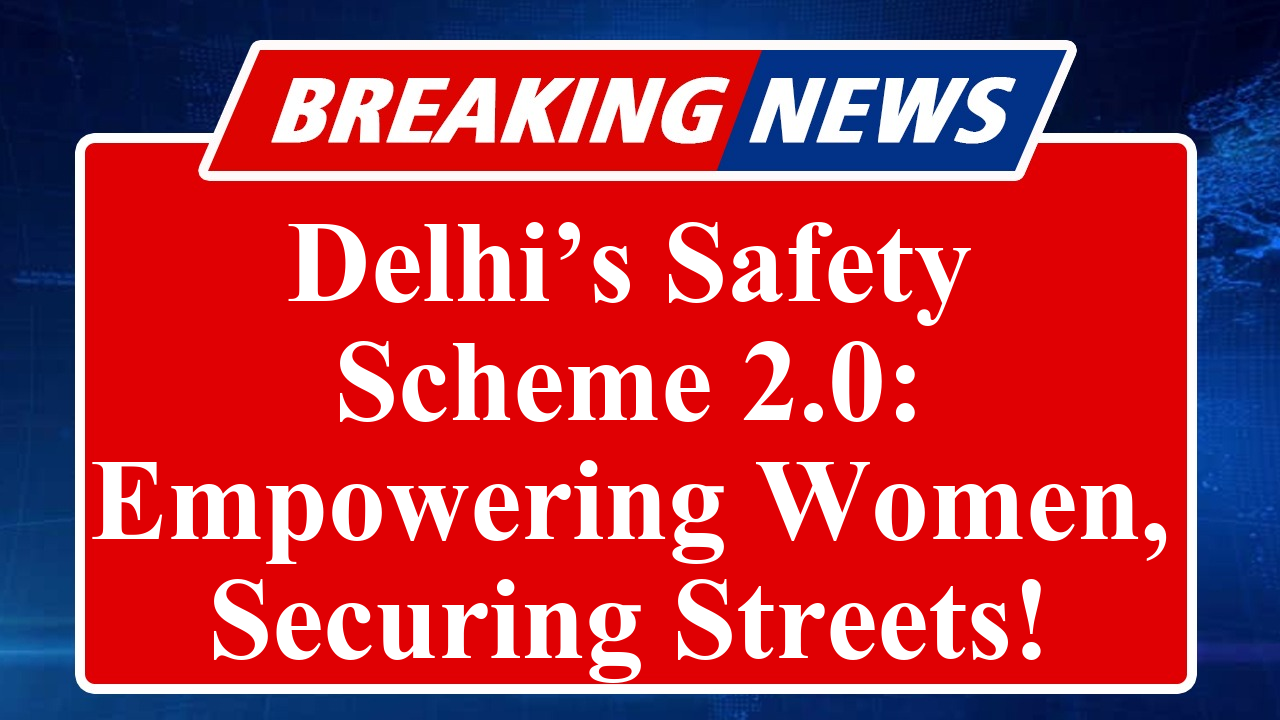“Delhi’s Safety Scheme 2.0, launched to enhance women’s safety, introduces advanced surveillance, dedicated police squads, and public awareness drives. With a focus on eliminating dark spots and ensuring safer public spaces, the initiative aims to empower women through technology-driven measures and stricter enforcement.”
Delhi Unveils Safety Scheme 2.0 to Strengthen Women’s Protection
On July 3, 2025, Delhi Chief Minister Rekha Gupta announced the launch of Safety Scheme 2.0, a comprehensive initiative aimed at enhancing women’s safety across the national capital. The scheme builds on the government’s ongoing efforts to make Delhi’s public spaces more secure, particularly for women, through a multi-pronged approach involving technology, law enforcement, and community engagement.
A cornerstone of the initiative is the expansion of CCTV surveillance across the city. The Delhi government plans to install 10,000 additional high-resolution cameras in key public areas, including bus stops, metro stations, and marketplaces, to deter potential offenders and improve monitoring. These cameras will be integrated with a centralized control room operated by the Delhi Police, enabling real-time response to incidents. “We are leveraging technology to create a safer environment for women,” Gupta said in a statement, emphasizing the role of advanced surveillance in crime prevention.
The scheme also strengthens the ‘Shishtachar’ squads, first introduced in March 2025, which have already detained over 300 individuals for harassing women in public spaces. These plainclothes units, comprising both male and female officers, will now be deployed in 50 additional high-risk areas identified through crime mapping. Delhi Police Commissioner Sanjay Arora reiterated that the squads operate with a strict mandate to enforce laws without bias, ensuring swift action against offenders.
To address the issue of unsafe and poorly lit areas, Safety Scheme 2.0 includes a targeted plan to eliminate dark spots across Delhi. The government has allocated ₹200 crore to install 15,000 solar-powered streetlights in underlit areas, with work already underway in neighborhoods like Seelampur, Jahangirpuri, and Okhla. This initiative responds to concerns raised by residents and activists about the lack of lighting contributing to crimes against women.
Public awareness campaigns form another critical component of the scheme. The government has partnered with NGOs and women’s groups to conduct workshops and street plays to educate communities about gender sensitivity and reporting mechanisms. A dedicated mobile app, set to launch by August 2025, will allow women to report incidents anonymously, access emergency helplines, and share live locations with trusted contacts. “Empowering women means giving them tools to feel secure and heard,” said a Women and Child Development Department official.
The scheme also integrates with existing women-centric programs like the Mahila Samriddhi Yojana, which provides financial aid to economically disadvantaged women, recognizing that economic independence is closely tied to personal safety. Additionally, the Delhi High Court’s recent launch of an online portal for workplace sexual harassment complaints complements the scheme’s broader mission to create safer environments for women.
Despite these measures, challenges remain. Activists argue that systemic issues, such as delays in judicial processes and societal attitudes, need parallel attention. A recent article in The Guardian highlighted the persistent caution women exercise in public spaces, underscoring the need for cultural shifts alongside policy interventions. The scheme’s success will depend on its implementation and the government’s ability to address these deeper issues.
Disclaimer: This article is based on recent news reports, official statements, and publicly available information from sources such as The Hindu, Times of India, and Hindustan Times. The details provided are accurate as of July 3, 2025, and may be subject to updates as new information emerges.

